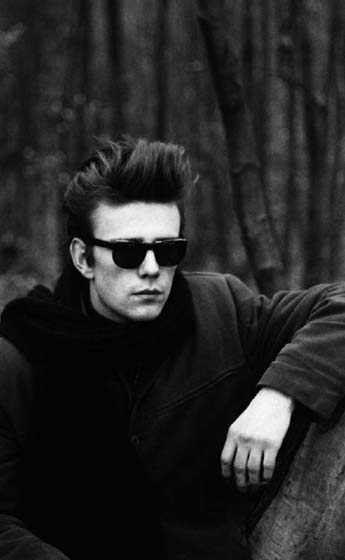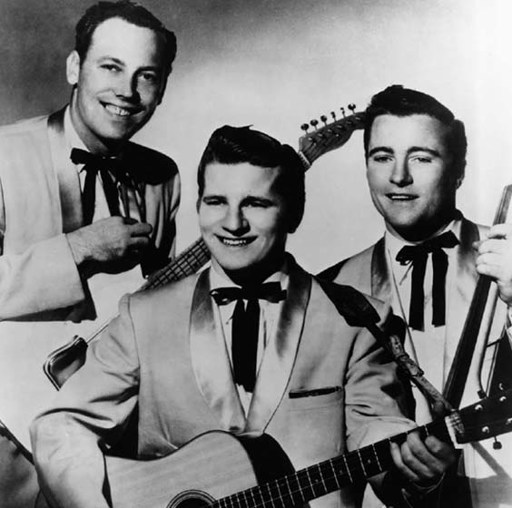The Encyclopedia of Dead Rock Stars (2 page)
Read The Encyclopedia of Dead Rock Stars Online
Authors: Jeremy Simmonds

There were, of course, uncomplicated drug deaths. On 21 May 1964,
Rudy Lewis
became the first of numerous Drifters to soft-shoe-shuffle off doo-wop’s mortal coil over the next few decades
( Dead Interesting!
Dead Interesting!
). Lewis (heroin overdose) had been the third lead – Johnny Williams (homesickness) and James Poindexter (stage fright) having proved unworkable – in an apparently unending search to replace Ben E King (cash dispute). Although the otherwise-healthy Lewis (born in Philadelphia on 23 August 1936) was found in a hotel room with a needle in his arm, his death was diplomatically put down to ‘asphyxiation after a particularly large supper’ by senior Drifter and spokesman Johnny Moore – who was to join him in an ever-growing celestial version of the band thirty-four years on ( December 1998).
December 1998).
The first bona fide rock ‘n’ roll death was probably the massive heart attack that finished off
Danny Cedrone
(born Donato Cedrone, 20 June 1920) on 18 June 1954. This young guitarist’s best-known solo will remain familiar to pretty much everyone as it continues to chime out across rock revival nights and wedding receptions alike, from the middle eight of Bill Haley & His Comets’ ‘Rock around the Clock’. Slide-guitar ground-breaker
Elmore James
(born in Richland, Mississippi, on 27 January 1918) was similarly dogged with a dodgy ticker throughout his life; the frenetic Chicago-blues and boogie-woogie man checked out after a third coronary on 5 May 1963.
Making history in such a way and not living to see it must surely frustrate those on the other side. What of
Stuart Sutcliffe,
the ‘fifth Beatle’ and already a part of that phenomenon’s history before his death from a brain haemorrhage in the spring of 1962? A talented painter, who should perhaps never have strayed from his original calling, struggling guitarist Sutcliffe (born in Edinburgh on 23 June 1940) found himself the victim of one of many regular attacks on The Silver Beetles (as he’d once named them), in which he was knocked to the ground and kicked in the head. Although bleeding profusely from the resultant gash, he refused to allow his mother to call an ambulance. The Beatles then decamped to Hamburg, where Sutcliffe experienced headaches and mood swings, which he attributed to his new lifestyle. Abandoning music to return to art, Sutcliffe (much to John Lennon’s disappointment) remained in Germany to shack up with lover Astrid Kirchherr – but, sadly, it was to be only a short-lived arrangement. Despite doctors diagnosing nothing, Sutcliffe was virtually confined to his bed by April, collapsing unconscious on the 10th and – despite attempts to revive him – dying on the way to hospital. A post mortem finally revealed the tumour beneath his skull exactly where he had been kicked two years previously.
1
When The Beatles returned to Hamburg the next day, a heartbroken Kirchherr met them at the airport: ‘When they asked me, “Where’s Stu?”, with tears rolling down my face I told them the news. John cried hysterically while Paul [McCartney] and Pete [Best] wept unashamedly.’
DEAD INTERESTING!
SIX FEET UNDER THE BOARDWALK
With an increasing number of dead members, The Drifters are definitely among the front-runners in
The Encyclopedia’s
Deceased Members Hit Parade. The names of those we know to be confined to vocal history are:
Al Banks (lead, 26/7/1937-7/1977)
Little David Baughan (tenor, 1938-70)
Fred Below (drummer, 16/9/1926-14/8/1988)
Marcel Evans (tenor, d 28/10/2005)
Tommy Evans (bass, 1/9/27-9/1984)
Bill Fredericks (baritone/lead, no dates available)
Doc Green (baritone, 8/10/1934-10/3/1989)
Elsbeary Hobbs (bass, 4/8/1936-31/5/1996)
Rudy Lewis (lead, 23/8/1936-21/5/1964)
Clyde McPhatter (tenor, 15/11/1932-13/6/1972)
Johnny Moore (tenor/lead, 15/12/1934-30/12/1998)
Lover Patterson (manager/singer, 1930-65)
Eugene Pearson (baritone, 1935-6/4/2000)
Bill Pinkney (first tenor, 15/8/25-4/7/2007)
Bobby Warren (singer, d 29/4/2000)
Johnny Williams (tenor/lead, 27/10/1940-19/12/2004)
Ali-Ollie Woodson (keyboard, 12/9/1951-30/5/2010)
Vernon Young (lead, 13/1/1949-17/2/2005)
(Real completists might like to add early guitarist Walter Adams (d 1953), journeyman sax-player Earle Warren (d 1994), singer ‘Pico’ Payne (d 2002) and even one-time bassist Dave Goodman (d 2005).)

Stuart Sutcliffe: Brushed with fame, brushed with death
Sutcliffe’s insidious injury all too eerily echoed that of
Jay Perkins
four years before. In the spring of 1956, Perkins (born James Buck Perkings in Tiptonville, Tennessee, in 1930) had travelled to New York as one of the three guitar-picking Perkins Brothers to perform better-known sibling Carl’s ‘Blue Suede Shoes’ on that cutting-edge music showcase
The Perry Como Show.
Their driver, clearly struggling to contain his excitement, fell asleep at the wheel, and the group’s luxury Chrysler slammed into a poultry pick-up. Suffering a fractured neck, Jay could only watch on television as young Elvis Presley debuted the soon-to-be-classic song in their absence, stealing the show as he did so. Jay Perkins suffered massive repercussions from his injuries, becoming ill on tour two years later and dying on 21 October 1958. But his was not the first car accident in our survey …
If Cedrone was likely the first rocker to go, then it’s beyond much doubt that distinctive, pencil-moustachioed
Tommy Gaither
(born in 1927) of Baltimore sensations The Orioles was the first ‘name’ singer to die in one of the era’s increasingly prevalent motor accidents. After a New York show on 5 November 1950, Gaither took the concept of a drive-in restaurant rather too literally: the over-tired singer steered his band’s yellow Dodge into the establishment’s front wall. More sinister was R & B singer
Jesse Belvin
’s demise on 6 February 1960. Appearing at an early integrated-audience concert at Little Rock, Arkansas, Belvin (born in San Antonio, Texas, on 15 December 1932) and illustrious co-stars Sam Cooke (who was to survive him by under five years), Jackie Wilson, Marv Johnson and Little Willie John were subjected to dismal barracking from white supremacists. Four hours after the performance, Belvin, his wife/manager, JoAnn (who died a week later), and his driver, Charles Shackleford, lay shattered on Highway 67. The tyres of the hired vehicle had, according to state troopers at the scene, ‘obviously been tampered with’. Many felt that this was very likely the work of the same race-hate group that had disrupted the show, though no investigation was ever carried out.
1
(Spare a thought, also, for young
Vernon Isley
– boy prodigy and fourth-oldest of soul giants-to-be The Isley Brothers: he and his bicycle careered into a lorry in 1955, when Vernon was just eleven.)
Aircraft-fearing, non-driving
Eddie Cochran
had been nursing a premonition that he would die dramatically for some time, troubled as he was by the death of his friend Buddy Holly (of whom more shortly). As Cochran (born Ray Edward Cochrane in Albert Lea, Minnesota, on 18 October 1938) travelled to Heathrow Airport from Bristol, the Ford Consul that carried him and fellow touring rock ‘n’ roll great Gene Vincent had a high-speed blow-out on the A4 near Chippenham, Wiltshire. Cochran was thrown through a door after the car skidded 150 yards on the wet road, striking a concrete lamp-post; the singer received a massive blow to his skull as he landed. While 19-year-old chauffeur George Martin
2
escaped uninjured, Vincent suffered a fractured collarbone and severe injuries to his legs. Cochran’s girlfriend, Sharon Sheeley, and tour manager, Pat Tomkins, also suffered minor damage. Cochran himself was less fortunate. Admitted to a Bath hospital, he died at 4 pm on Easter Day, 17 April 1960, from extensive brain lacerations, instantly assuming the status of rock ‘n’ roll’s second martyr. (His death attracted more attention in Britain than back at home, and Cochran’s ‘Three Steps to Heaven’ was number one there a month later.)
It was water that saw the demise of another key early rocker, Rock ‘n’ Roll Trio frontman
Johnny Burnette
(born in Memphis, Tennessee, on 25 March 1934), who met a premature end during a fishing accident: Burnette drowned in Clearlake, California, after his unlit craft was struck by a larger vessel on 1 August 1964. But it’s fair to say that the inability of the touring musician to master his transportation was commonplace: if a hired car or boat seemed potential bad news, then agreeing to ride in a twin-engine plane must have been akin to assigning one’s spirit there and then to the hereafter. Gospel figurehead
Ronald ‘R W’ Blackwood
(born in Ackerman, Mississippi, on 23 October 1921) – of the Elvis-approved Blackwood Brothers Quartet – thought he was on to a good thing when he bought such a craft to ease his troupe’s travelling commitments. Ahead of test-flying his new toy, though, supposedly experienced pilot Blackwood critically forgot to re-trim the plane’s tabs (whatever that means), and the Beechcraft plummeted to the ground, taking him, his bass-singer Bill Lyles and their buddy John Ogburn Jr to an unexpectedly early date with inspiration on 30 June 1954.
